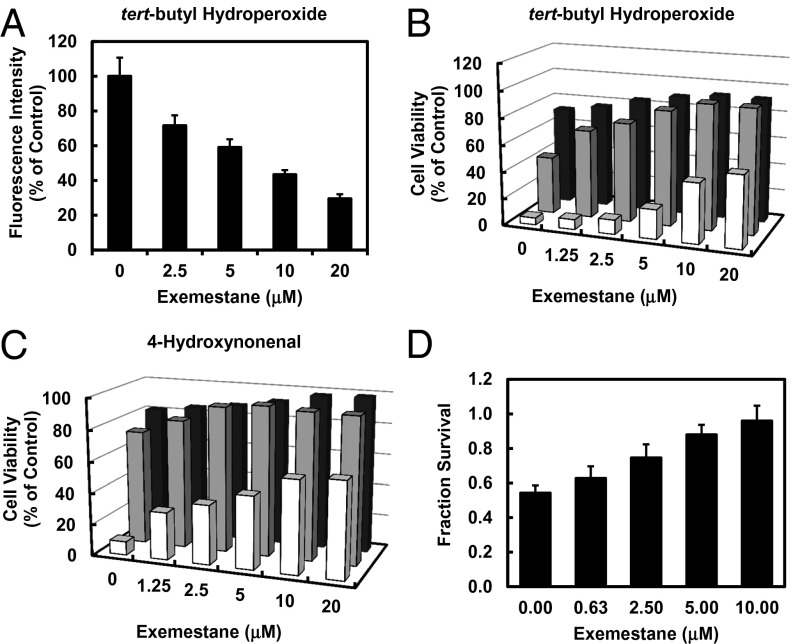Fig. 2.
Exemestane protects cells against oxidative stress. (A) ROS suppression by exemestane in human retinal pigment epithelial ARPE-19 cells. After 24 h of incubation with exemestane, the cells were exposed to 20 μM DCFDA for 30 min and then challenged with 500 μM tert-butyl hydroperoxide for 30 min. Fluorescence intensity was measured. Means ± SD are shown. Protection of ARPE-19 cells against toxicity of (B) tert-butyl hydroperoxide (0.2, 0.4, 0.8 mM for 4 h) and (C) 4-hydroxynonenal (10, 20, 40 μM for 4 h) as a function of 24-h prior exposure to 0–20 μM exemestane. Bar graphs show that cell viability is a function of both the concentrations of the oxidants and of exemestane. SDs for all measurements were less than 10%. Front, center, and rear series of bars refer to the highest, middle, and lowest concentrations of the oxidants, respectively. (D) Exemestane protects against hypoxia/reoxygenation-induced cardiomyocyte injury. Rat myocardial H9c2 cells were treated with exemestane for 24 h and then subjected to hypoxia for 1 h (2 mM Na2S2O4), and reoxygenation for 24 h. Cell viability, assessed by 3-(4,5-dimethylthiazol-2-yl)-2,5-diphenyltetrazolium bromide (MTT) assay, was expressed as fractional survival compared with cells not exposed to hypoxia/reoxygenation. Means ± SD are shown.

